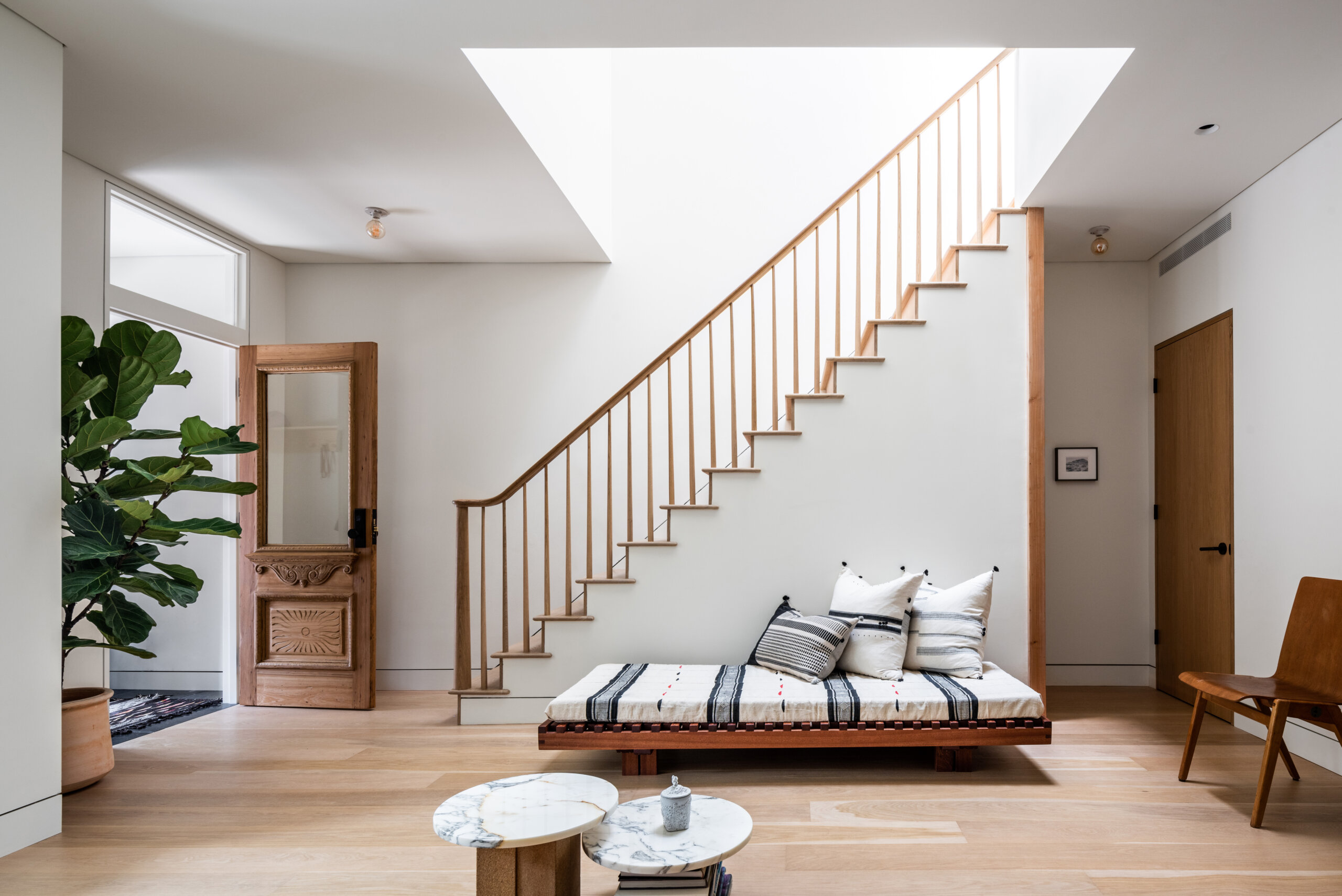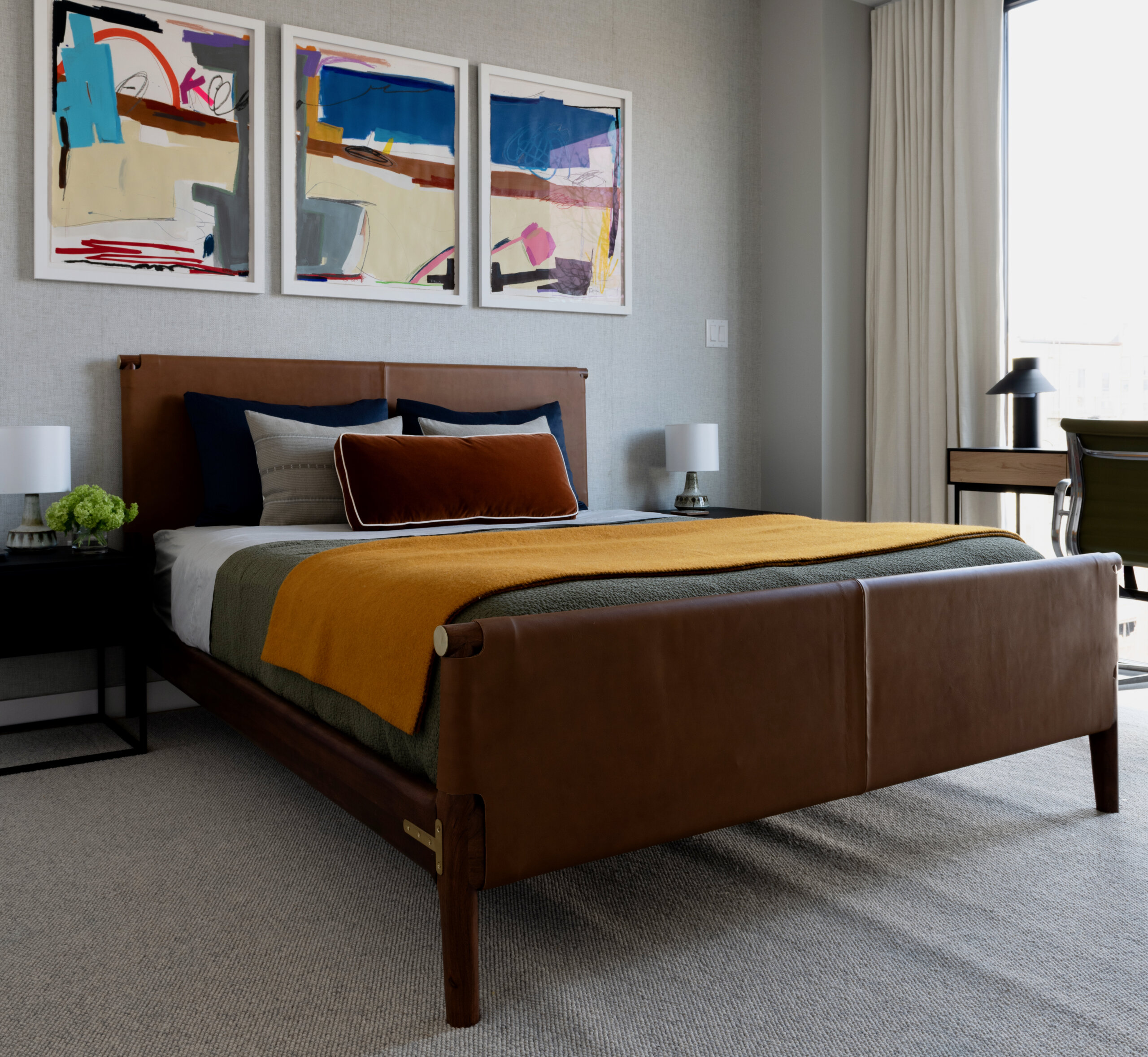Building of the Day: 151 Powers Street, a Charming Fishscale Cottage in Williamsburg
Brooklyn, one building at a time. A tiny wood-framed house survives in Williamsburg. Name: Semi-detached wood frame house Address: 151 Powers Street Cross Streets: Manhattan and Graham avenues Neighborhood: Williamsburg, formerly Greenpoint Year Built: Before 1868, perhaps early 1850s Architectural Style: Greek Revival/Italianate with later alterations Architect: Unknown Landmarked: No The Dutch came to Greenpoint…
Brooklyn, one building at a time.
A tiny wood-framed house survives in Williamsburg.
Name: Semi-detached wood frame house
Address: 151 Powers Street
Cross Streets: Manhattan and Graham avenues
Neighborhood: Williamsburg, formerly Greenpoint
Year Built: Before 1868, perhaps early 1850s
Architectural Style: Greek Revival/Italianate with later alterations
Architect: Unknown
Landmarked: No
The Dutch came to Greenpoint (some parts of which are now part of Williamsburg) a long time ago — a ship’s carpenter known as Dirk the Norman was given a grant of land in Greenpoint by the Dutch West India Company in 1645. He was Greenpoint’s first single landowner.
The Norman was a harbinger of things to come, because Greenpoint’s first large industry would be shipbuilding. By the 1830s, shipbuilders were setting up docks and shipbuilding facilities. Located right across from Manhattan, with access to the rest of Brooklyn’s growing shipping concerns, Greenpoint was in the perfect spot for success.
There were several large companies and scores of smaller independent workers, all of whom put Greenpoint on the map for the building of ships. This lasted until after the Civil War.
New industries eventually supplanted the industry, including glassworks, porcelain china, pottery and oil. Even pencils were being made here. By the end of the 19th century, Greenpoint was one of Brooklyn’s busiest industrial sections.
Almost everyone who lived in Greenpoint worked in one of these industries. The earliest available map of the area, published in 1868, shows the neighborhood around today’s building of the day surrounded by homes, churches, schools and small industry.
151 is at center right, mislabled. 1868 map via New York Public Library
Greenpoint’s 19th-Century Architecture
The entire neighborhood was originally built up in wood. Most of the houses are wood-frames, as are the churches and schools. By 1868 we can see masonry buildings here and there, but they are newer and totally outnumbered by wood-framed buildings.
Many of those wood-framed houses still stand, although most are unrecognizable as wood.
There’s not a lot of information available about today’s house, which now falls into Williamsburg’s boundaries. It was built with only one story above the raised basement. The 1868 map lists it with a “1,” (story) while the attached house next door at 149 was, and is, a “3.”
1887 map via New York Public Library
The garage on the other side was always a service building of some kind. The 1887 map has an “X” across the roof, which indicates a service building, usually a carriage house or stable. This map also lists the house as a two-story, with a two-story and a one-story addition in the back. 149 Powers is still a three-story, which leads to the possibility that our BOTD is not the same building as the one in 1868.
However, the style of the house corresponds to the earlier date, as does the general shape. A look at census records might help, except for the fact that they only list names, no corresponding addresses until the 1880 census.
Photo by Christopher Bride for PropertyShark
A Charming Transitional Greek Revival/Italianate With Victorian Details
So what do we have here? A one-story Greek Revival/Italianate-style wood-frame perhaps built in the early 1850s. The roof detail and cornice are similar to houses from that era, as seen in Wallabout on Vanderbilt Avenue, and even the Elkins House in Crown Heights North.
The house would have originally been clapboard. In the 1880s, many of Greenpoint’s clapboard houses got a makeover, with the substitution of fancy shaped shingles. Here, decorative fish scale shingles add a bit of whimsy to an already whimsical little house.
The awning over the entire façade is later as well, with even later aluminum awnings, a bit of overkill. Amazingly, the house still has its original cast iron fencing.
The house is 25 by 35 feet on a 100-foot lot, so it’s not cramped. It’s a one-family with 1,400 square feet. PropertyShark states that the house sold in 2013 for $1,045,000. I hope that doesn’t mean a teardown.
Photo by Scott Bintner for PropertyShark
[Top photo: Christopher Bride for PropertyShark]
Related Stories
Building of the Day: 138 Milton Street
Building of the Day: 141 Java Street
Building of the Day: 109 Kent Street














I just wanted to join the discussion to confirm that Powers Street was NEVER considered to be a part of Greenpoint. This immediate area was, like everything else, initially a part of the town of Bushwick. Around 1830, it was annexed into the town of Williamsburgh and became a part of the 3rd Ward, which was popularly known as Dutchtown due to either the fact that (1) Williamsburgh had just absorbed a portion of the old Dutch town of Bushwick; or (2) most of the persons moving into this area were Germains – popularly known as “Dutchmen”
During the 1950’s – 1970’s era, when Williamsburg was considered to be little more than a slum neighborhood and Greenpoint was – at least in comparison – a more stable community, many people in the (then) mostly Italian north-central portion of Williamsburg considered themselves to be Greenpointers. However, the southern boundary of this expansive definition of Greenpoint almost (though not entirely) never extended below Metropolitan Avenue, which is three blocks north of Powers St. In view of this, this address was almost never considered to be a part of Greenpoint.
Hope this helps clear things up.
This is not even remotely in Greenpoint.
I asked Montrose about this and she said old maps and newspapers referred to it as Greenpoint — I’ve updated it to reflect that it now falls in Williamsburg’s boundaries. Thanks!
I asked Montrose about this and she said old maps and newspapers referred to it as Greenpoint, though today it does fall within Williamsburg’s boundaries so I’ve updated it to reflect that. Thanks!